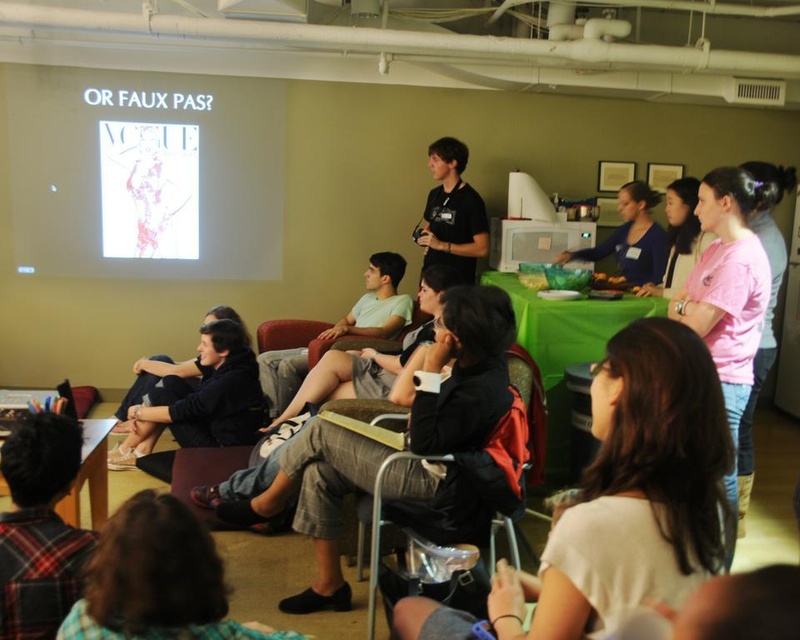
Daphne Brooks, a Professor of English at Princeton University and a Radcliffe Fellow, lead a discussion on the new faces of feminism surrounding pop icons Lady Gaga and Beyonce.
About 25 students debated whether Lady Gaga and Beyoncé have become feminist icons through their pop music at a discussion last night moderated by Radcliffe Institute Fellow and Princeton University professor Daphne A. Brooks.
“Pop culture music is a place where patriarchy, racism, normalphobia, and homophobia—all the social and political problems our society has—reside, and reproducing these forms of oppression is problematic,” Brooks said at the Harvard College Women’s Center. “But it has also served as one of the sights for women and queer subjects to criticize and challenge societal phobias and oppression.”
Students analyzed media coverage of the two pop stars, such as magazine covers, interviews and photographs, and discussed whether Lady Gaga was making a radical statement in gracing the cover of Vogue clad only in raw meat.
“I like the irony in this picture. Women are often referred to as a piece of meat, so Lady Gaga wearing raw meat definitely makes a statement,” said Sarina M. Patterson ’14. “But at the same time, it’s just gross.”
Students watched and examined the two artists’ collaboration in the past year and compared Lady Gaga’s video, “Telephone” which features Beyoncé, and the latter’s “Videophone” video featuring the former.
"I feel like Beyoncé is such a sex icon. We are obsessed with her image and her body," said Alexandra L.L. Almore ’12. "I think looking at her body next to Lady Gaga's is very interesting.... Lady Gaga is like an anti-sex icon. She almost makes sex scary."
Students also noted that race played a role in the two artists’ self-representation.
Brooks said discussions like yesterday’s are useful tools for students to analyze today’s society and culture: “Students can use the critical thinking tools they are learning in the classroom and apply them to the world around them,” she said.
—Staff writer Tara W. Merrigan can be reached at tmerrigan@college.harvard.edu.
Read more in News
Degrees for the DeadRecommended Articles
-
Gaga for GagaLady Gaga is a unique figure in society, and it makes sense to examine her trajectory.
-
 Oprah to Join Lady Gaga at Sanders Theatre
Oprah to Join Lady Gaga at Sanders Theatre -
 Lady Gaga Raffle Goes Live
Lady Gaga Raffle Goes Live -
 More Chances to See Lady Gaga, Thanks to the UC
More Chances to See Lady Gaga, Thanks to the UC -
Gaga to Bring Boot Camp, SymposiumLady Gaga will announce the creation of her new charity, the Born This Way Foundation, at an event in Harvard’s Sanders Theatre on Wednesday afternoon.
-
Student Groups Seek Support From Lady Gaga’s BTW FoundationWhen the collective star power of Lady Gaga, Oprah Winfrey, Deepak Chopra, and more special guests amasses inside Sanders Theatre for the launch of a new anti-bullying foundation on Wednesday, protesters will gather outside to ask Harvard to shine a spotlight on a long-gone group of people as well.













